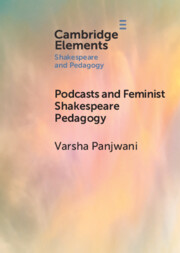Element contents
Podcasts and Feminist Shakespeare Pedagogy
Published online by Cambridge University Press: 28 October 2022
Summary
- Type
- Element
- Information
- Online ISBN: 9781108973311Publisher: Cambridge University PressPrint publication: 01 December 2022
References
- 12
- Cited by

